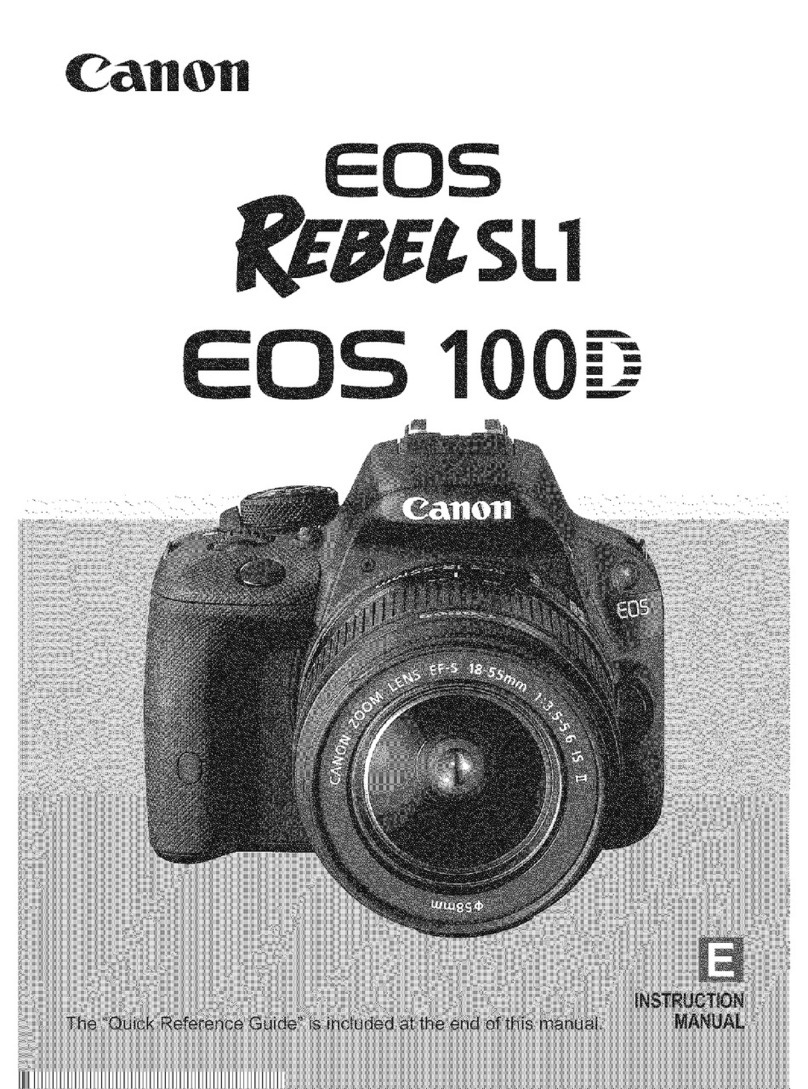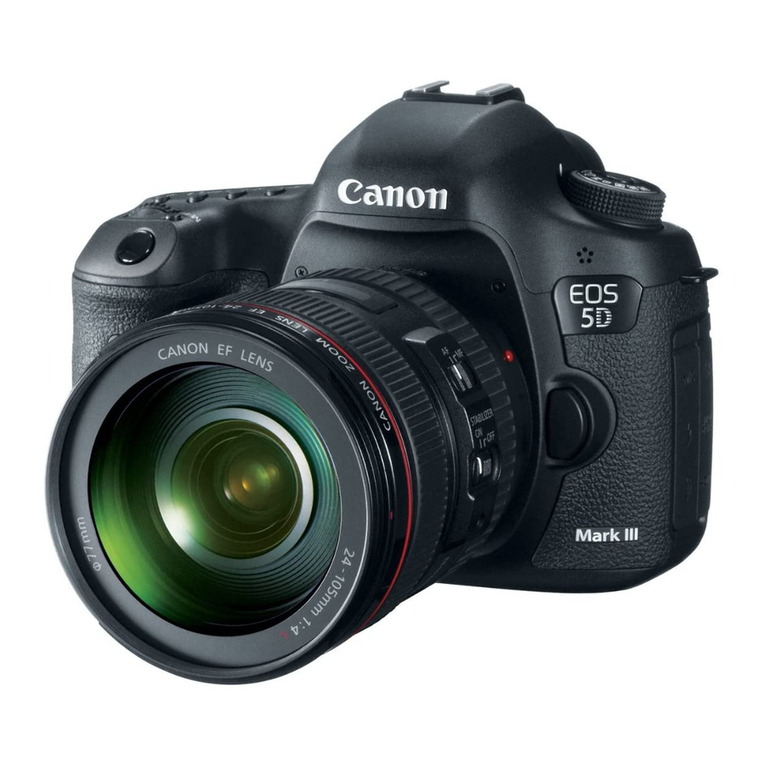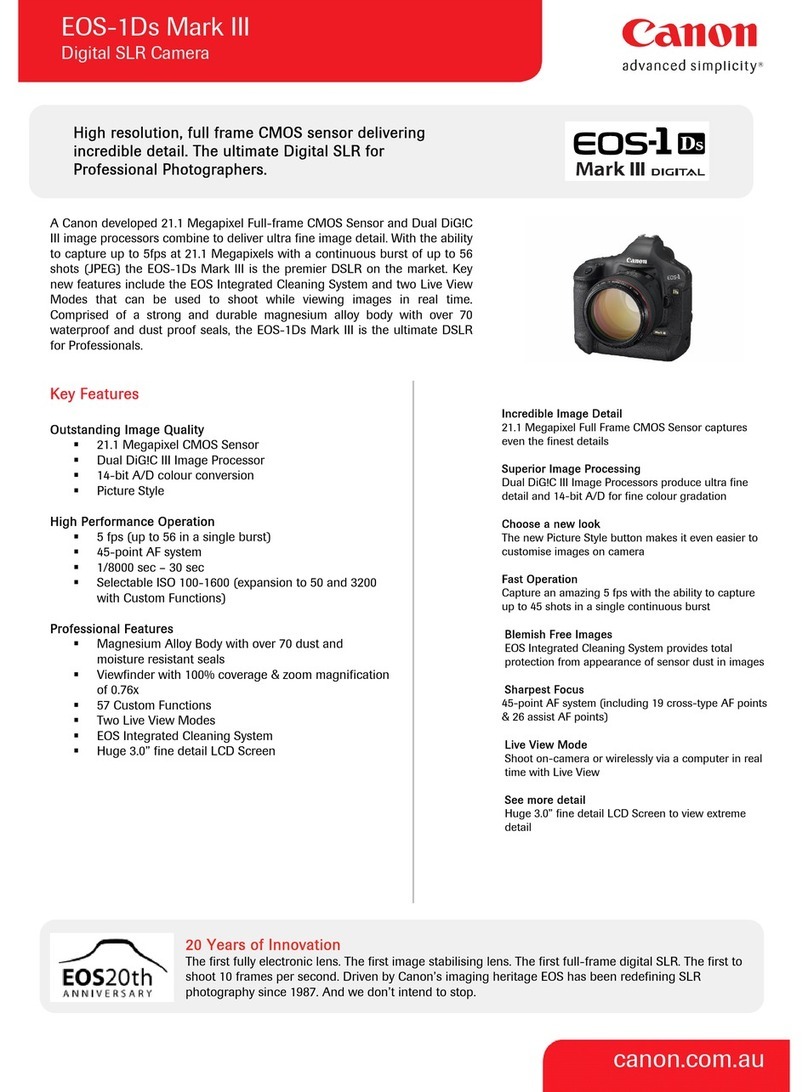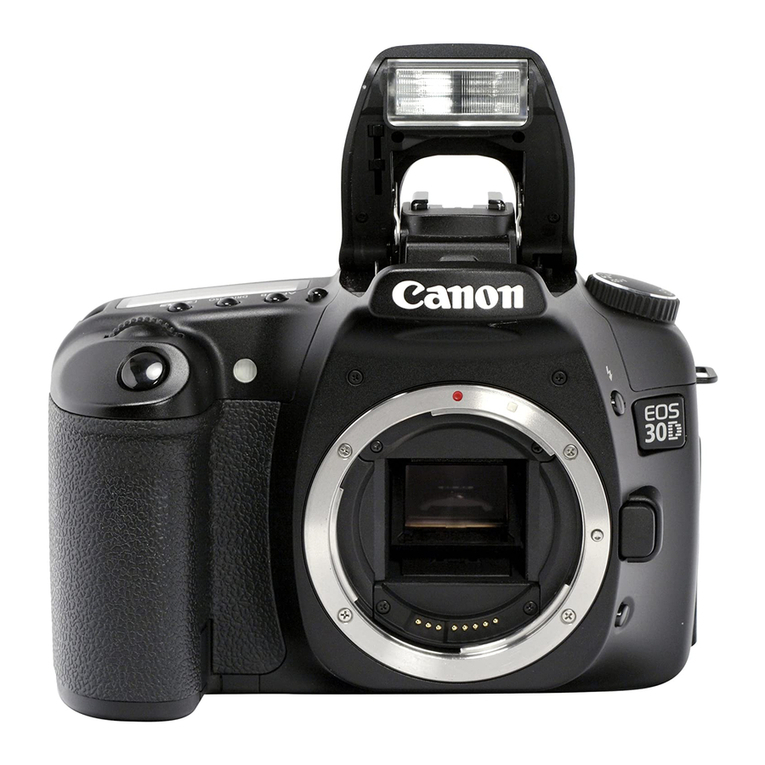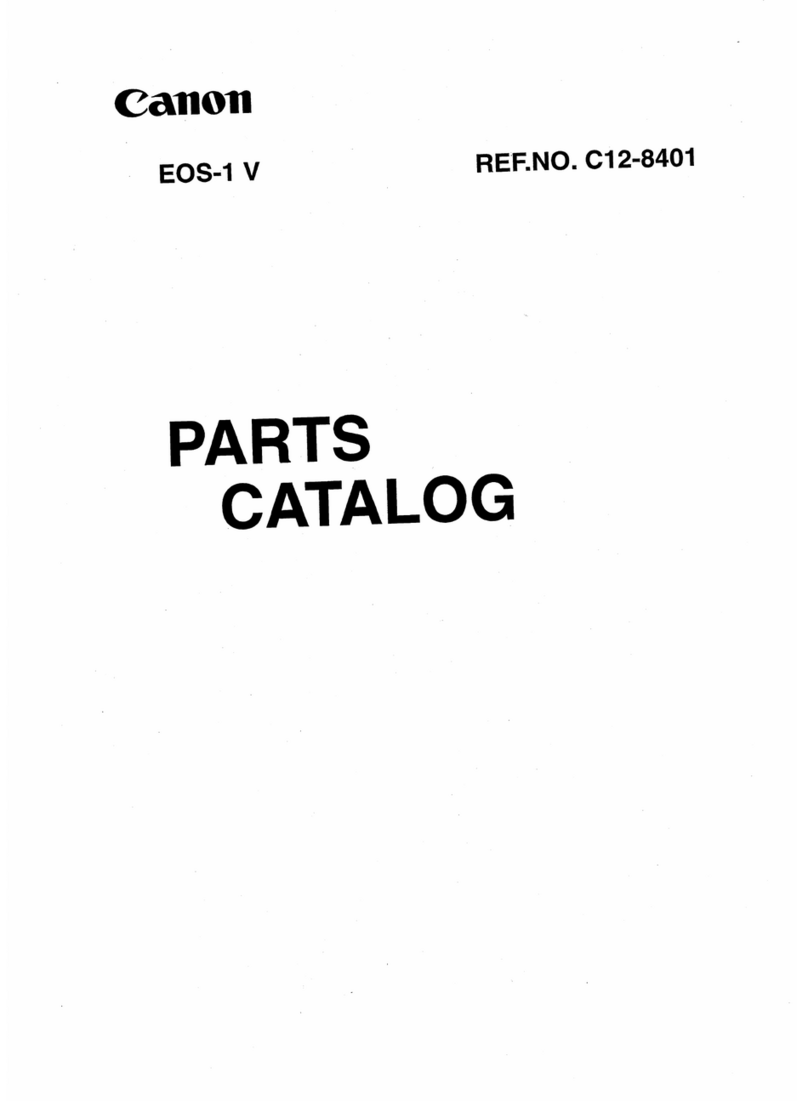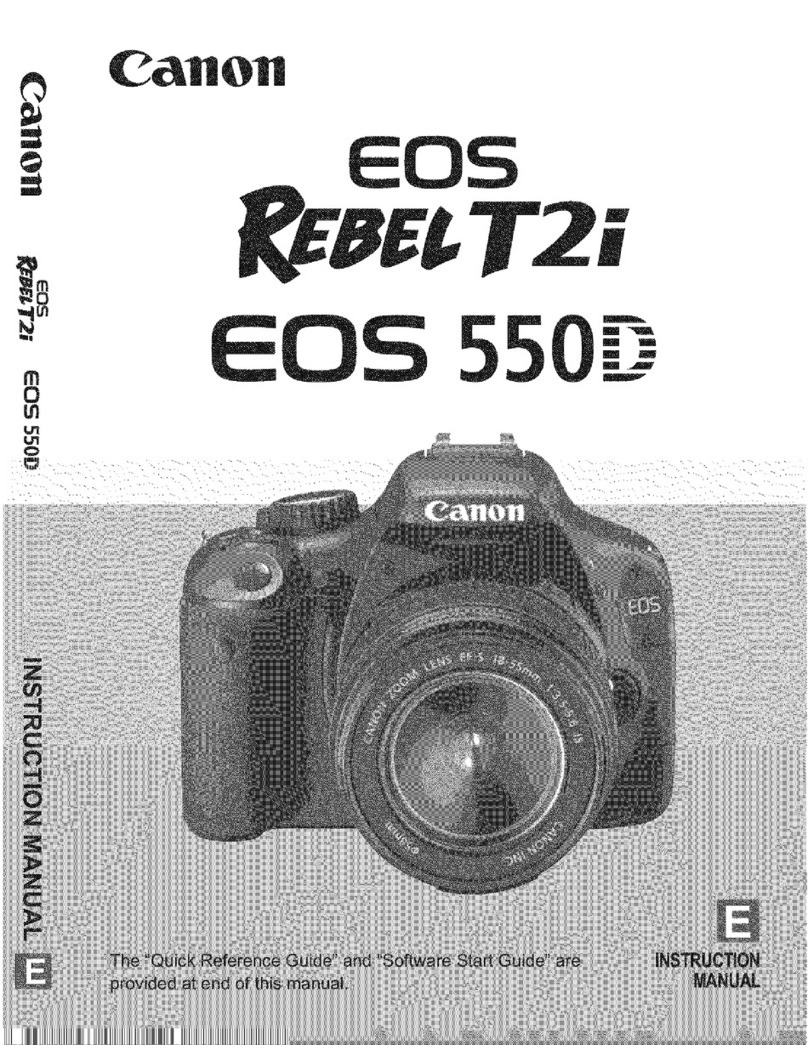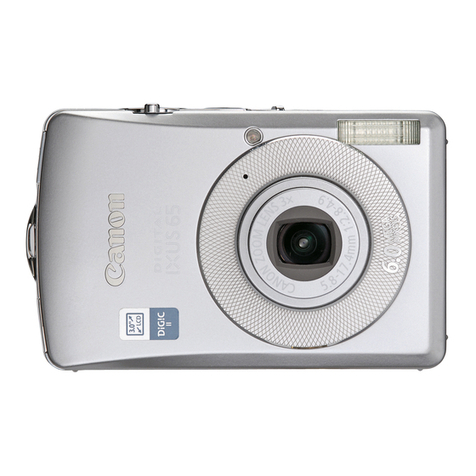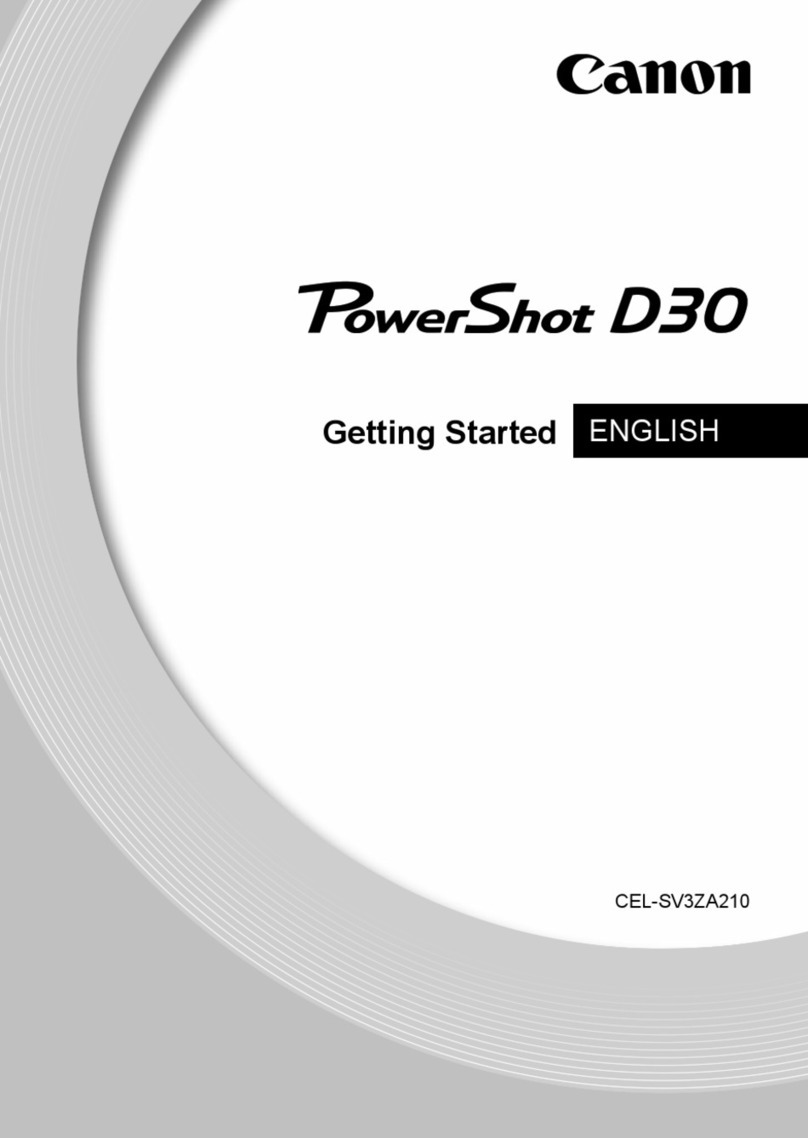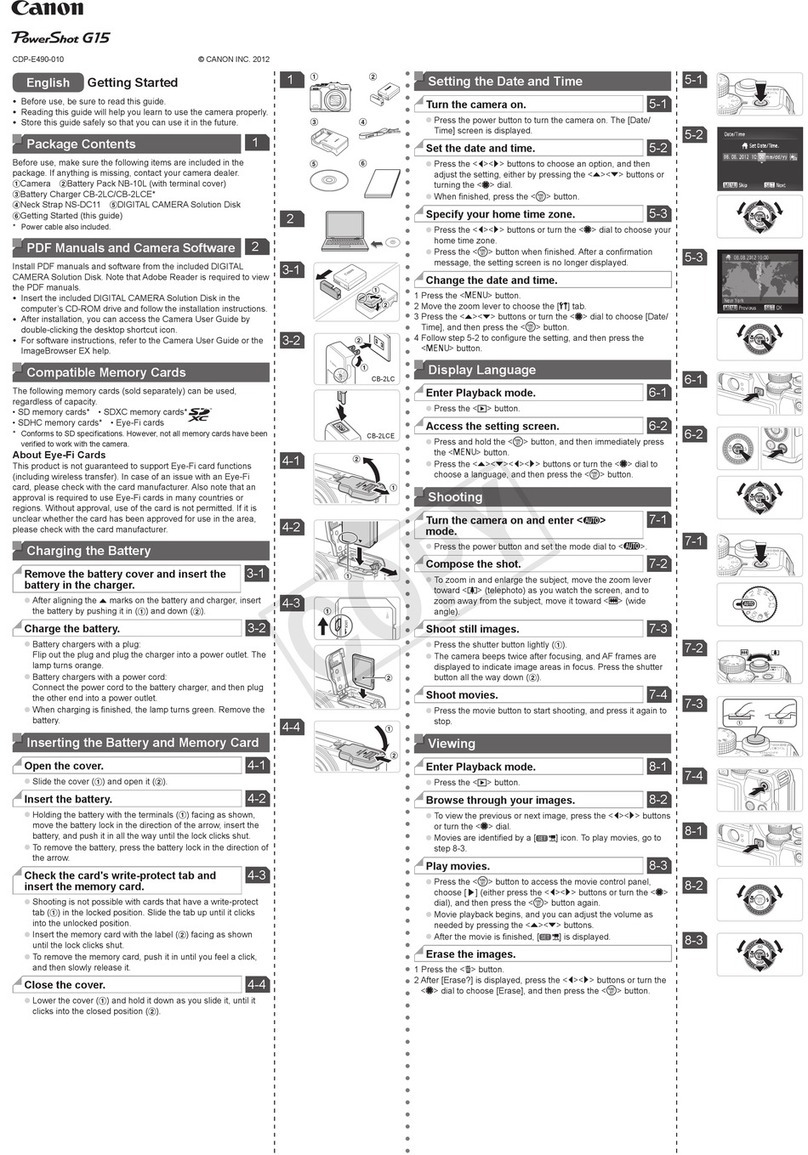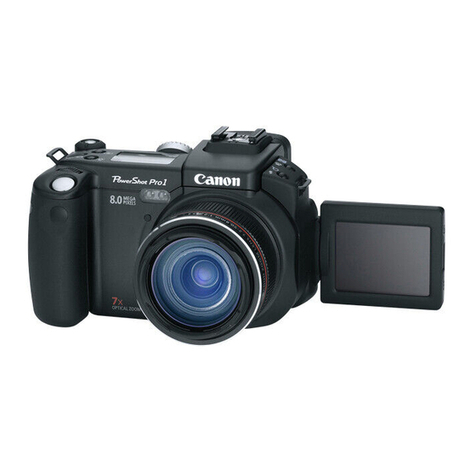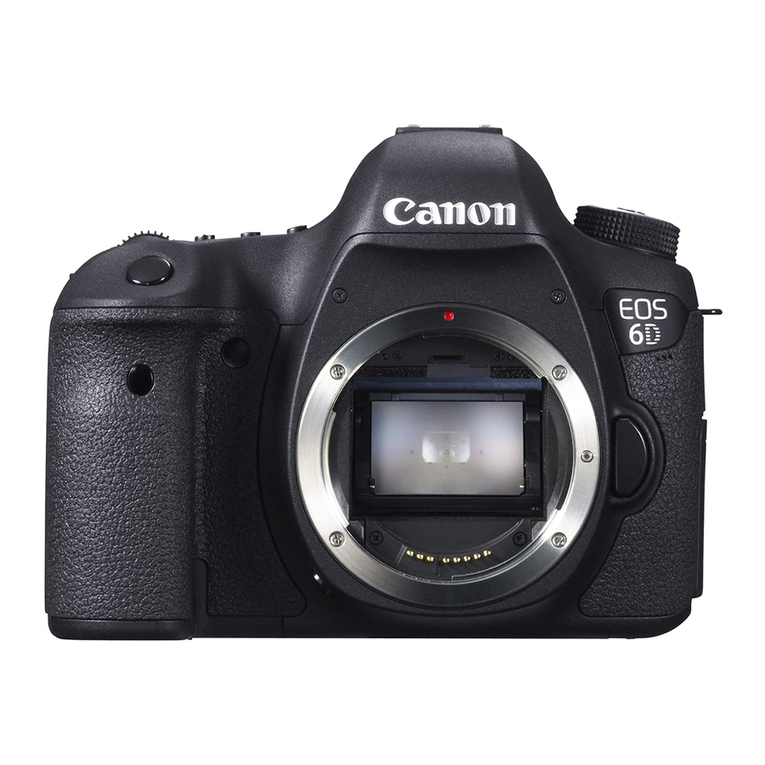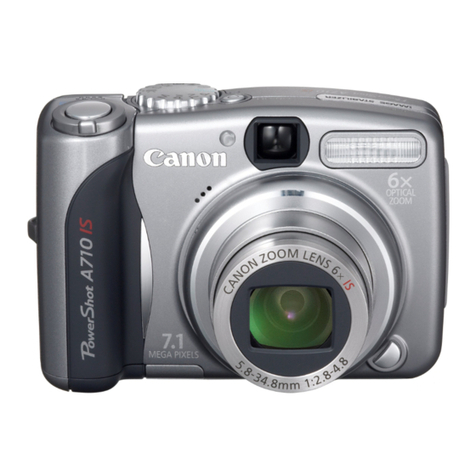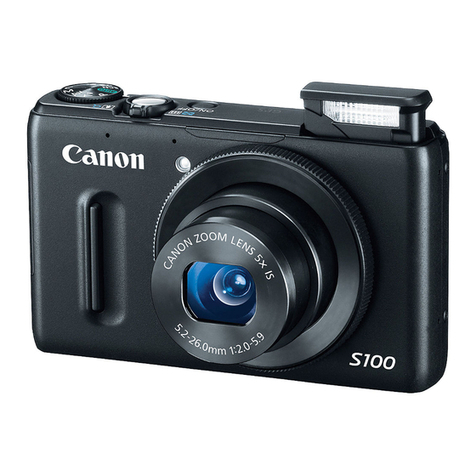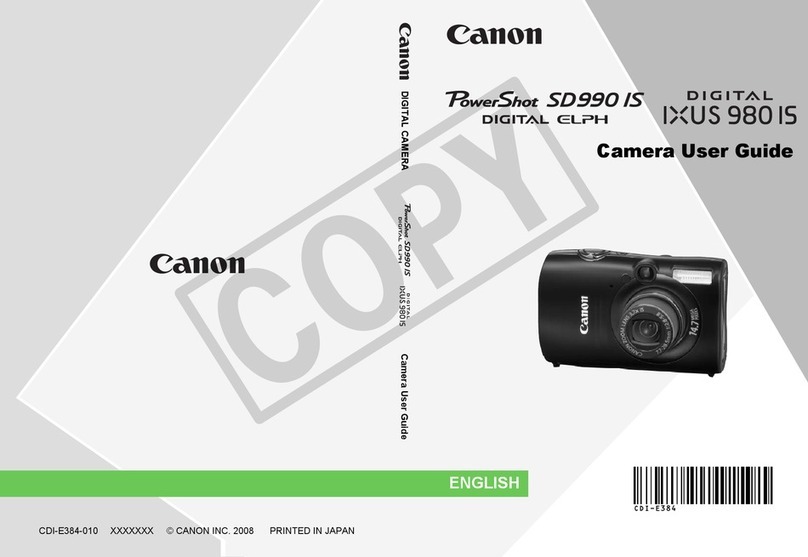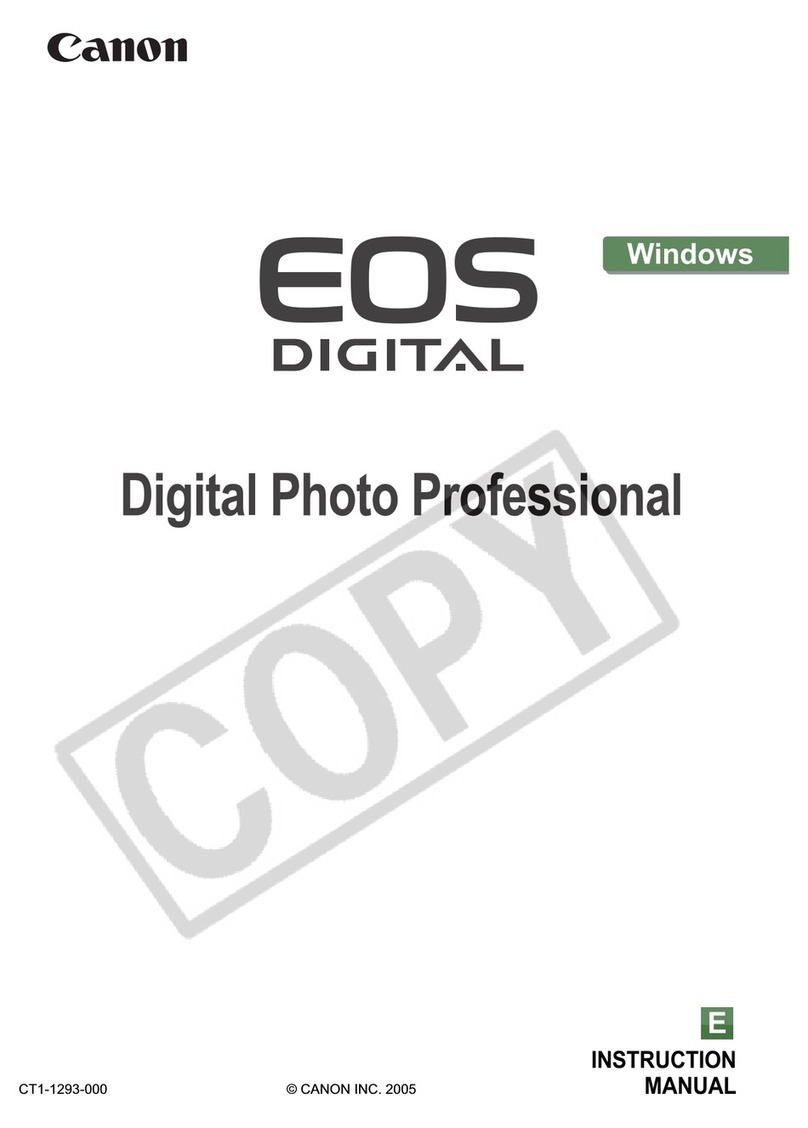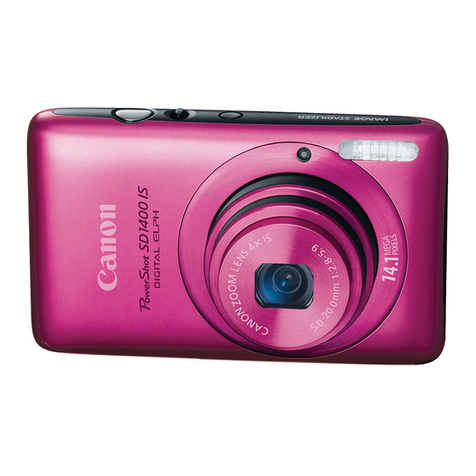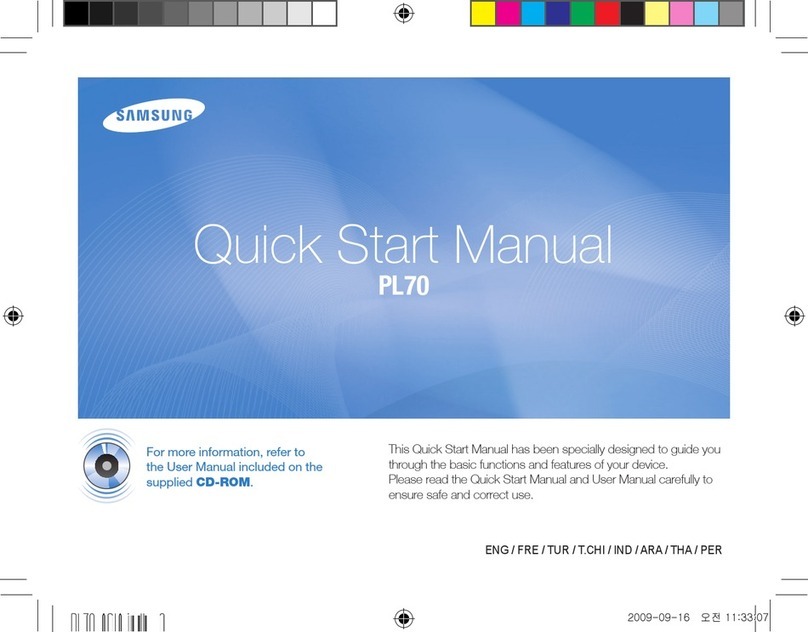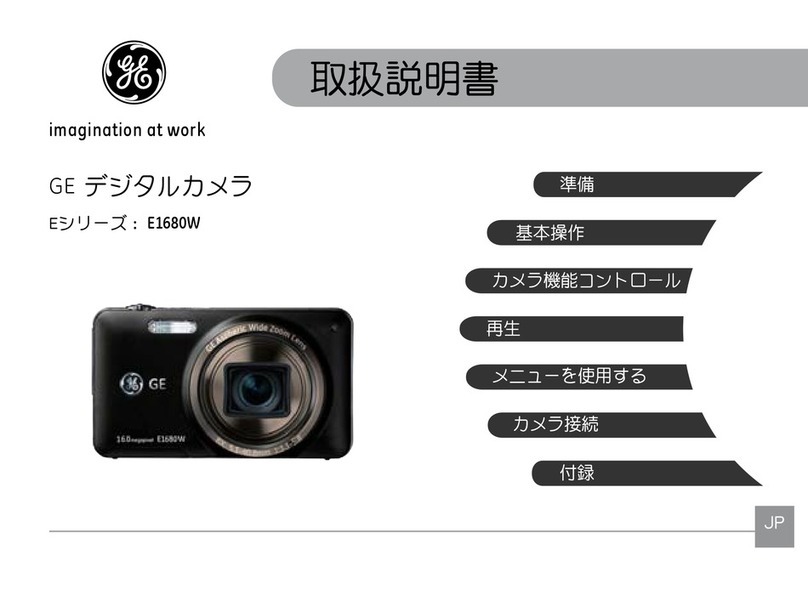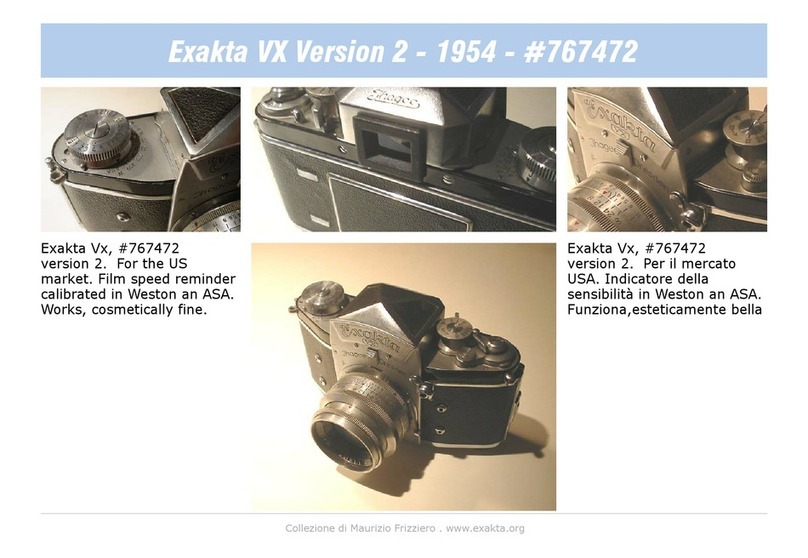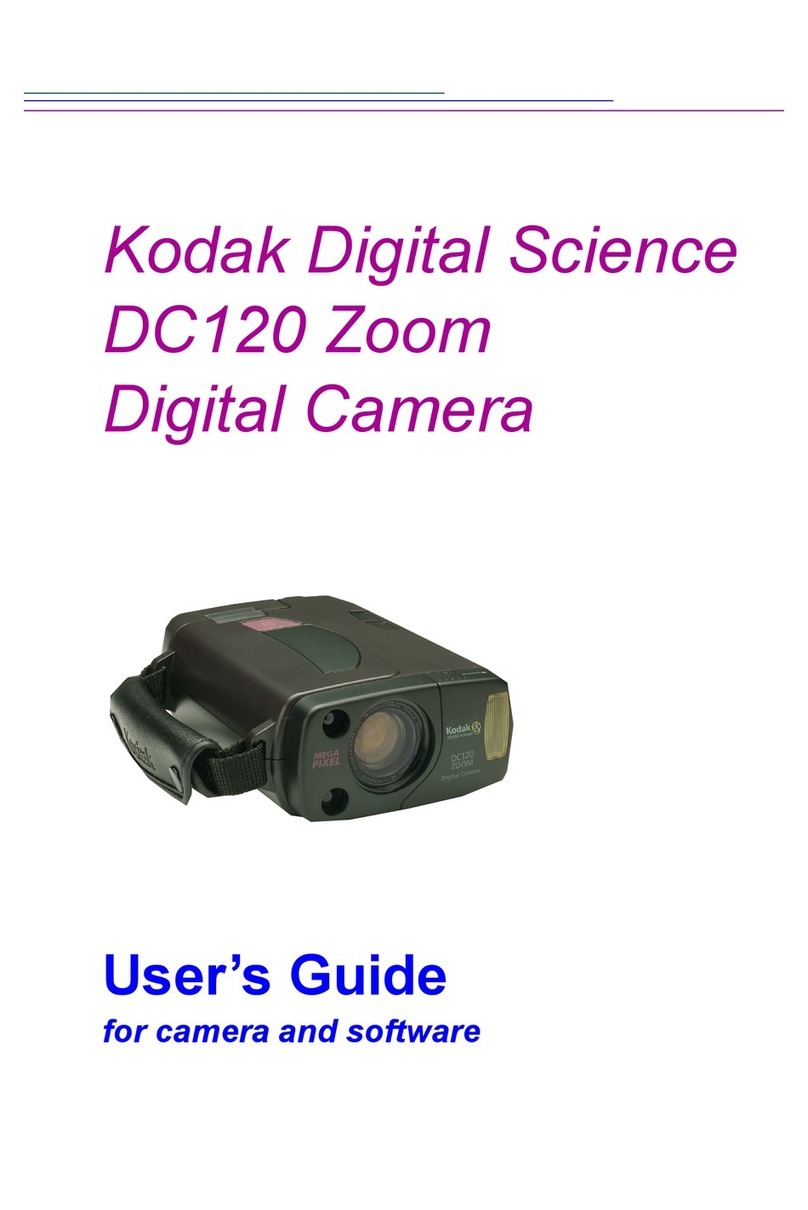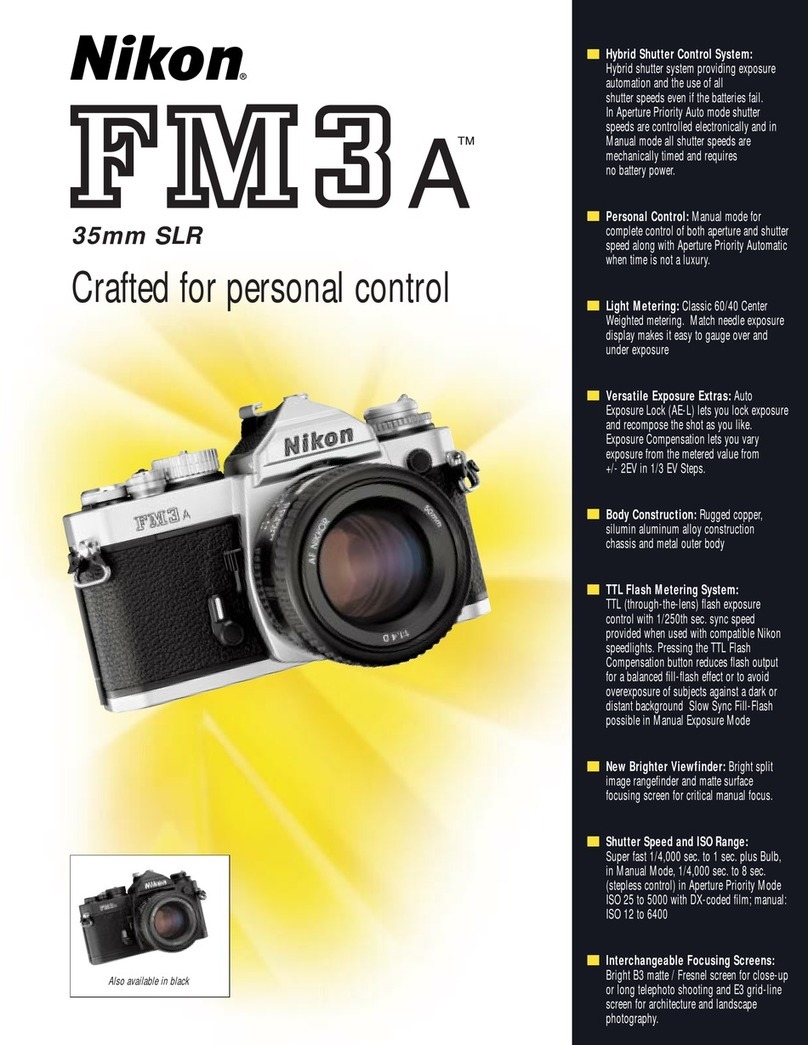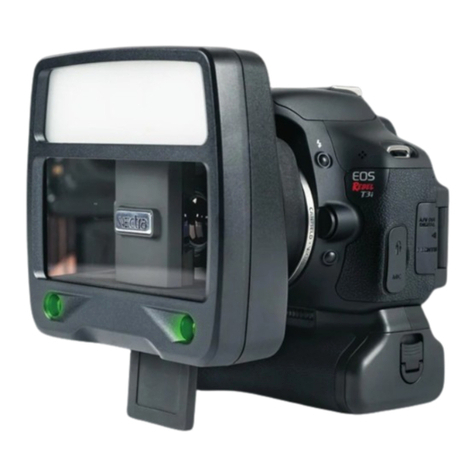4) The Viewfinder and Information Display
Like the EOS-1N, the EOS-1V’s viewfinder coverage is
100 percent, the viewfinder magnification is 0.72 ×, the
eye relief is 20 mm, and the dioptric correction range is
-3 to +1 dpt. The viewfinder blackout time is shorter at
87 ms (EOS-1N: 140 ms, EOS-3: 105 ms). The
viewfinder image is also stable even during continuous
shooting.
The standard focusing screen is the newly developed
Laser Matte focusing screen with the Area AF ellipse.
Other Ec-series focusing screens can also be used.
The superimposed focusing point is two stops brighter
than the EOS-3’s. It is easier to see under bright conditions. The viewfinder display
on the right and bottom of the image area is almost the same as the EOS-1N’s.
The new FP flash icon has been added below the image area, and the new flash
exposure level scale is on the right of the image area. The frame counter is fully
digital, and it reflects the frame counter displayed on the LCD panel. There is also a
frame countdown icon (new) which indicates that the frames are being counted in
reverse order. With CF-8-2, the same frame counter display (F 9 - 0) as the EOS-
1N’s can be set.
5) Metering, Exposure Control, and the Shutter
The algorithm for evaluative metering and E-TTL autoflash
metering has been changed to attain better stability.
Otherwise, the exposure control and metering modes are
the same as the EOS-3’s. The shutter is based on the
highly reliable rotary magnet-controlled shutter used in
the EOS-3. It has carbon curtains. Improved shutter cock-
ing has made the curtain speed faster to attain a maxi-
mum X-sync of 1/250 sec. and shutter speeds from 30 to
1/8000 sec. The shutter durability is 150,000 cycles.
Bulb exposures can be as long as 23 hr., 59 min., and 59
sec. The bulb exposure’s elapsed time is indicated digitally on the LCD panel.
6) Film Transport
The continuous shooting speed is shown in
Table 2. With PB-E2 and NP-E2, the EOS-1V is
the world’s fastest 35mm AF SLR camera at 10
fps. This applies when the scene is metered for
each shot, and it does not apply to stopped-
down shooting. With PB-E2 and NP-E2, the
EOS-1V can be set to one of four film advance
modes: Single-frame, low-speed, high-speed,
and ultra-high speed continuous advance. The
EOS-1V is also compatible with bottom-attach-
able accessories for the EOS-1, EOS-1N, and EOS-3.
With silencing technologies such as floating supports for film advance and shutter
cocking, the film transport noise level is almost the same as the EOS-1N’s (6 fps)
during high-speed continuous shooting (7 fps). Film rewind noise is also the same
level as the EOS-1N’s.
Although an infrared sensor is used to detect the film transport, infrared film can
be used with the EOS-1V since new optics prevent the picture area from getting
fogged.
1-8
Part 1: General Information
Fig. 1-9 Viewfinder.
